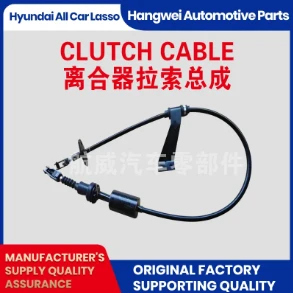hydraulic clutch pipe
Understanding Hydraulic Clutch Pipes A Critical Component of Automotive Systems
In the realm of automotive engineering, the hydraulic clutch system plays a vital role in the effective transmission of power from the engine to the wheels. One critical component of this system is the hydraulic clutch pipe, a seemingly simple yet essential part that deserves closer examination. Understanding its function, design, and maintenance can lead to improved vehicle performance and longevity.
What is a Hydraulic Clutch Pipe?
The hydraulic clutch pipe, often referred to as a hydraulic line or hose, acts as a conduit for the hydraulic fluid used in a hydraulic clutch system. This pipe connects the master cylinder, typically located near the driver’s foot pedal, to the slave cylinder, which is generally situated near the clutch assembly within the engine compartment. The primary function of the hydraulic clutch pipe is to facilitate the transfer of hydraulic pressure created by the driver’s action on the clutch pedal, allowing for seamless engagement and disengagement of the clutch itself.
How Does It Work?
When the driver presses the clutch pedal, this action compresses the fluid in the master cylinder. The hydraulic fluid is then forced through the hydraulic clutch pipe into the slave cylinder. This pressure causes the slave cylinder to extend, which disengages the clutch. When the driver releases the pedal, the pressure in the hydraulic system decreases, enabling the clutch to re-engage. This hydraulic mechanism offers several advantages over traditional mechanical linkages, including smoother engagement and reduced pedal effort.
Materials and Design
Hydraulic clutch pipes are manufactured from various materials, often depending on the specific application and vehicle design. Common materials include reinforced rubber, stainless steel, and thermoplastic composites. Reinforced rubber hoses are flexible and resistant to abrasion, making them suitable for many automotive applications. Stainless steel pipes, on the other hand, provide extra durability and resistance to environmental factors, although they may lack the flexibility of rubber hoses.
hydraulic clutch pipe

The design of hydraulic clutch pipes is crucial for ensuring both performance and safety. These pipes must withstand high pressure and be resistant to leaks. Therefore, they are usually tested rigorously for durability and pressure tolerance. Additionally, the diameter and length of the hydraulic pipe can affect the responsiveness of the clutch system, making it essential for manufacturers to optimize these specifications during the design phase.
Maintenance and Common Issues
While hydraulic clutch pipes are designed to be robust, they can still be prone to wear and tear over time. Common issues that may arise include leaks, kinks, or even bursts due to excessive pressure. A leaking hydraulic line can lead to a soft or unresponsive clutch pedal, affecting the vehicle's operability. Therefore, regular inspection and maintenance are crucial.
Drivers should be aware of signs that their hydraulic clutch pipe may be failing. These include fluid spots under the vehicle, a spongy clutch pedal, or difficulty in shifting gears. If any of these symptoms are observed, a thorough inspection should be performed promptly.
Routine maintenance should include checking the hydraulic fluid level and inspecting the lines for any visible signs of wear, such as cracks or bulges. It is also advisable to replace the hydraulic fluid at recommended intervals to prevent degradation and ensure optimal performance.
Conclusion
The hydraulic clutch pipe is an integral part of the hydraulic clutch system, contributing significantly to the seamless operation of a vehicle’s transmission system. Understanding its function, common issues, and maintenance needs can help vehicle owners and enthusiasts ensure their cars remain in top condition. By paying attention to this often-overlooked component, drivers can enhance the performance and longevity of their vehicles, ensuring an enjoyable and safe driving experience. Whether you are a car owner or an automotive professional, recognizing the importance of the hydraulic clutch pipe is essential in appreciating the engineering marvels that make modern vehicles operate smoothly.
-
Workings of Clutch Pipe and Hose SystemsNewsJun.04,2025
-
The Inner Workings of Hand Brake Cable SystemsNewsJun.04,2025
-
The Secrets of Throttle and Accelerator CablesNewsJun.04,2025
-
The Hidden Lifeline of Your Transmission Gear Shift CablesNewsJun.04,2025
-
Demystifying Gear Cables and Shift LinkagesNewsJun.04,2025
-
Decoding Clutch Line Systems A Comprehensive GuideNewsJun.04,2025
